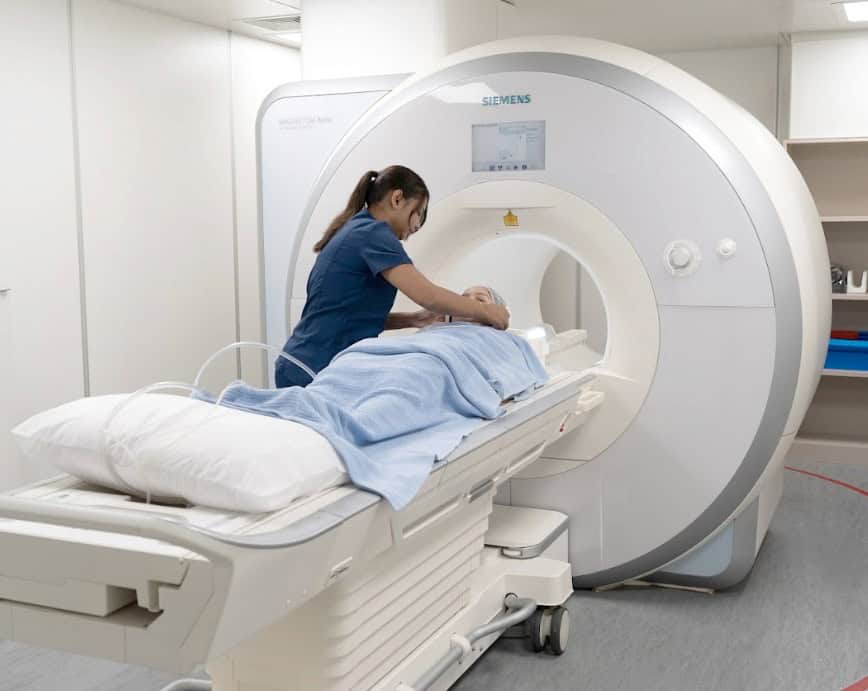Magnetic resonance imaging (MRI)

Magnetic resonance imaging (MRI)
Magnetic resonance imaging (MRI) is a non-invasive medical imaging technique that uses radio waves and a strong magnet to create detailed pictures of the inside of the body. MRIs can be used to: Diagnose disease Plan treatment Monitor the effectiveness of treatment Image the brain, spinal cord, heart, blood vessels, bones, joints, soft tissues, organs, and breasts The MRI machine creates a strong magnetic field around the patient, which alters the alignment of hydrogen atoms in the body. Radio waves are then sent to knock the nuclei of the atoms out of position, and when they realign, they send out radio signals. A computer receives these signals and converts them into images. MRIs do not use ionizing radiation like X-rays or CT scans. The magnetic fields and radio waves do not appear to have any side effects. However, the strong magnetic fields can cause pacemakers and other implants to not work as well.












